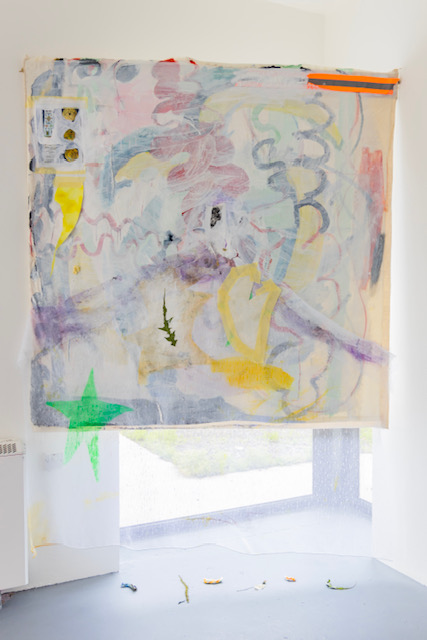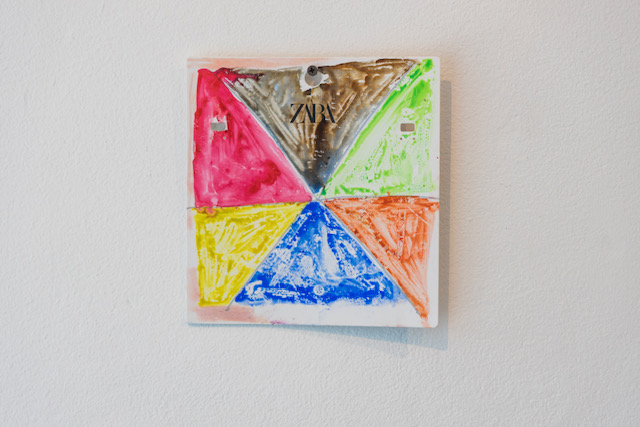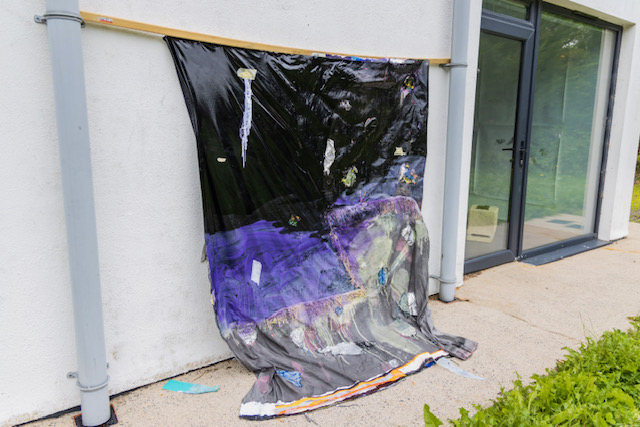…the exactitude of matters of table…
— Rosalind Krauss, The Optical Unconscious, 1994.
For some time now, we, at Periphery Space, have been trying to rethink the exhibition and the processes that lead towards an exhibition. This rethinking is motivated by many things, such as cultural changes in relation to technology and social media, our peripheral and unique location within Gorey School of Art, our artist-run ethos, and a very real ambition to change the relationship between the art institution and the artist in the processes that lead towards making and experiencing art in the public sphere.
Every year we come together to rethink what we did the previous year. We are always wanting more from the process of exhibition-making. We believe exhibitions play an important part in motivating artists to make work towards, and we always aim to exhibit art that challenges the public’s thresholds of taste and thinking. This year we came together with an emphasis on the moment immediately following art school, when the isolated artist is left to shoulder the responsibility of making and disseminating their own work. Hence “peripheriesPOST”.
The word “table” has come up repeatedly during our process of rethinking the exhibition at Periphery Space. In a recent conversation between Helen Molesworth and Benjamin H.D. Buchloh on the painter Gerhard Richter, the critics discuss Richter’s last ever painting (made in 2023) in relation to his first ever painting (made in 1962) “Tisch/Table”.
The table also makes an appearance in philosopher Graham Harmen’s Object-Oriented Ontology, as a criticism of reducing one thing into this or that system of thought, scientific or humanist. Interestingly, Harmen says that artists don’t reduce objects to their mere function or form, but perceive objects, like a table, as a conjunction of the table’s materiality and its effects on humans.
With this in mind, we asked the question: How could we inject the function and form of a table into an exhibition? And why? The why comes from thinking of the table as a positive social construct to eat and talk among friends, family and artists. Conversation has been an integral part of the processes that have led to this exhibition. The form that this table might take was another question and challenge in relation to the curation of artworks in, around and on top of the table.
In this formal respect, the table becomes a foil in both form and function, to facilitate another way of rethinking the exhibition. In one sense we want to take part of the exhibition back for the artists to engage and enjoy, rather than an event that is handed over to the public to experience in the absence of the artist. That is why we commissioned a chef to prepare a dinner in the space for the artists, which then becomes the formal conceit to offset the artworks in the space.
The 20 artists who are exhibiting work at Periphery Space this August range across different media. They represent a richness in the arts in Ireland that most of the time goes unnoticed. We are very excited about what they have achieved to formulate as individuals and as a community of artists in this very experimental process of developing work for the resulting exhibition Matters of Table.
Artists: Helen McNulty (Belfast/Wicklow), Vasiliki Stasinaki (Belfast/Antwerp), Susan Montgomery (Cork), Debi Paul (Wicklow), Johnny O’Grady (Dublin), Daniel Coleman (Armagh), Banbha Mc Cann (Dublin), Tara James Power (Wexford), Niamh Coffey (Dublin), Joe Nix (Carlow), Naomi Draper (Roscommon), Tamara Gangnus (Wexford), Sarah O Brien (West Cork), Florencia Caiazza (Dublin/Venezeula), Emma Hayes (Dublin), Noel Hensey (Kildare), Lucy Sheridan (Dublin), Anne Ffrench (Wexford), Kate Dunne, Olivia Normile (Dublin), Fiona Somers (Wexford), Kian Benson Bailes (Sligo)
———————
peripheriesPOST has become an experimental and communitarian project that brings together artists who feel lost in the POST of art school, or isolated artists who just want to connect with other artists. We see this new project — POST all the things that have happened in the last few years — as an opportunity to facilitate a space where artists can come together and feel supported in what they are questioning and developing in their work.
peripheriesPOST is supported by Wexford Arts Office.


